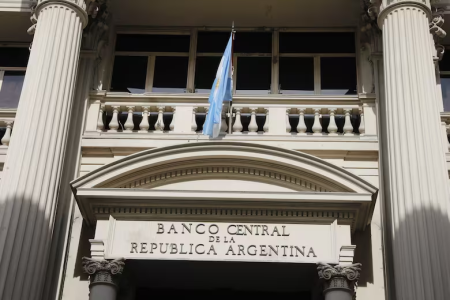SerenaCerv
New member
It took about 50 days for the Central Bank (BCRA) to show the first significant nominal decrease in the stock of debt remunerated in pesos.
This huge and heavy liability, a true testimony of the excesses in monetary issuance by the Fernández administration, was reduced from $29.875 billion to $27.305 billion (by $2.57 billion or 8.6%) between January 31 and February 1 thanks to the fact that the Government managed to absorb pesos through the issuance of the Bopreal, a bond created to cancel debt with importers: ten days ago, 690 companies were awarded $2.45 million in Bopreal.

 www.lanacion.com.ar
www.lanacion.com.ar
The article discusses the evolution of the Central Bank of Argentina's (BCRA) dollar liabilities after the passage of the Omnibus Law. It highlights that liabilities, mainly composed of legacy Lediv, increased significantly by 62.8% on that day. This change reflects the intention of Javier Milei, president, to "solve the problem of interest-bearing liabilities". However, it is noted that, although peso liabilities were reduced, the BCRA assumes foreign currency debt, which could present future challenges.

It is explained that the Government's strategy, including the gradual elimination of Leliqs and the reduction of the interest rate, contributed to the decrease in liabilities. The fall is attributed to the migration from Leliqs to repos and the issuance of the Bopreal, a bond for importers. Although the temporary improvement in the BCRA's results is mentioned, it warns about possible risks and negative consequences, such as money generation and sustained inflation. In addition, it highlights that the strategy could focus on liquefying the BCRA's balance sheet rather than improving fiscal results.

This huge and heavy liability, a true testimony of the excesses in monetary issuance by the Fernández administration, was reduced from $29.875 billion to $27.305 billion (by $2.57 billion or 8.6%) between January 31 and February 1 thanks to the fact that the Government managed to absorb pesos through the issuance of the Bopreal, a bond created to cancel debt with importers: ten days ago, 690 companies were awarded $2.45 million in Bopreal.
Primera reducción importante en los pasivos remunerados en pesos del BCRA
Es parte del plan que mezcla licuación y migración (a otra moneda u otro deudor, como el Tesoro) para achicar la denominada “bola de Leliqs” y apagar en adelante uno de los grandes motores responsables de la megaemisión monetaria de los últimos años
The article discusses the evolution of the Central Bank of Argentina's (BCRA) dollar liabilities after the passage of the Omnibus Law. It highlights that liabilities, mainly composed of legacy Lediv, increased significantly by 62.8% on that day. This change reflects the intention of Javier Milei, president, to "solve the problem of interest-bearing liabilities". However, it is noted that, although peso liabilities were reduced, the BCRA assumes foreign currency debt, which could present future challenges.

It is explained that the Government's strategy, including the gradual elimination of Leliqs and the reduction of the interest rate, contributed to the decrease in liabilities. The fall is attributed to the migration from Leliqs to repos and the issuance of the Bopreal, a bond for importers. Although the temporary improvement in the BCRA's results is mentioned, it warns about possible risks and negative consequences, such as money generation and sustained inflation. In addition, it highlights that the strategy could focus on liquefying the BCRA's balance sheet rather than improving fiscal results.


